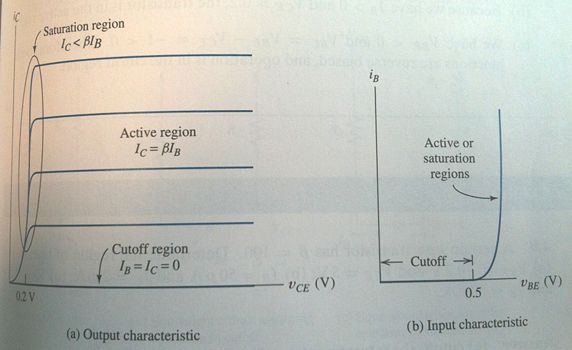Chapter 4: Difference between revisions
Jump to navigation
Jump to search
No edit summary |
No edit summary |
||
| Line 4: | Line 4: | ||
*PNP: Pointing iN Please |
*PNP: Pointing iN Please |
||
*The arrow is for the emitter current. For an NPN the current flows into the collector. For a PNP the current flows out of the collector. |
*The arrow is for the emitter current. For an NPN the current flows into the collector. For a PNP the current flows out of the collector. |
||
===How a BJT works=== |
===How a BJT works=== |
||
| Line 22: | Line 21: | ||
|} |
|} |
||
{| |
|||
| ⚫ | |||
[[Image:IMG_0288.jpg| |
| [[Image:IMG_0288.jpg|x350px|none]] |
||
| ⚫ | |||
|} |
|||
*What are the Saturation, Reverse Active and Cutoff regions used for? |
*What are the Saturation, Reverse Active and Cutoff regions used for? |
||
*Why do we always seem to use a common emitter configuration? |
*Why do we always seem to use a common emitter configuration? |
||
Revision as of 11:06, 3 March 2010
Bipolar Junction Transistor
- NPN: Not Pointing iN
- PNP: Pointing iN Please
- The arrow is for the emitter current. For an NPN the current flows into the collector. For a PNP the current flows out of the collector.
How a BJT works
Large-Signal DC models
| Base-Emitter | Collector-Emitter | Region |
|---|---|---|
| FB | FB | Saturation |
| FB | RB | Active |
| RB | FB | Reverse Active |
| RB | RB | Cutoff |
- What are the Saturation, Reverse Active and Cutoff regions used for?
- Why do we always seem to use a common emitter configuration?
- What does the Reverse Active large-signal model look like? How about graphically?
- What is the Triode region?

